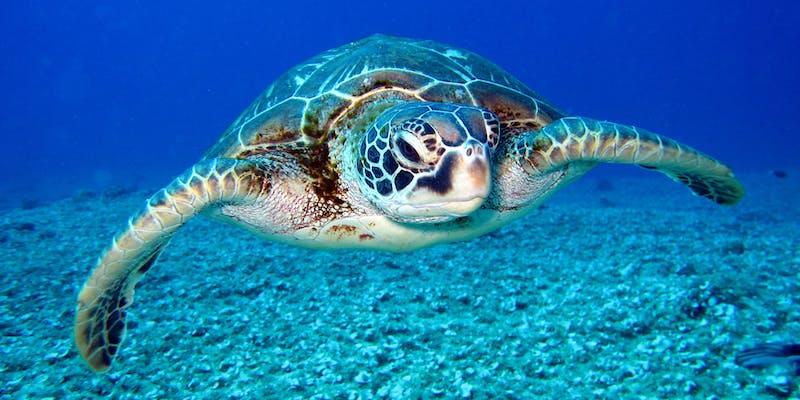Robotic technology has made significant advancements in recent years, enabling scientists and engineers to create machines that mimic the natural movements and behaviors of various animals. In a remarkable feat of engineering, doctoral student Ozkan Aydin, along with Nnamdi Chikere and John Simon McElroy, have designed and constructed a robotic sea turtle. This innovative creation aims to not only understand the adaptability of sea turtles but also contribute to the development of more versatile robots that replicate the unique capabilities of these majestic creatures.
Adaptability of Sea Turtles
Sea turtles possess a mesmerizing body shape, exhibiting distinct flipper morphology and utilizing varied gait patterns that allow them to navigate diverse terrains effortlessly. Their ability to adapt to different environments has intrigued scientists for years. By studying and understanding how these sea creatures adapt their gaits to traverse complex and varied terrains, we can gain valuable insights toward designing more versatile robots.
The Importance of Studying Sea Turtles
The study of sea turtles extends beyond mere scientific curiosity. These creatures play an integral role in maintaining the delicate balance of marine ecosystems. Their migration patterns, foraging behavior, and nesting habits greatly influence the health of coastal and oceanic environments. By comprehending the mechanics behind sea turtles’ locomotion, we can develop robots that possess similar capabilities, aiding in tasks such as underwater exploration, environmental monitoring, and marine conservation efforts.
Design and Functionality of the Robot
The robotic sea turtle ingeniously mimics the propulsion mechanism of its living counterpart. It employs front flippers for forward motion, while smaller hind flippers enable it to effectively alter direction. The main components of this cutting-edge creation include four separately radio-controlled flippers, an oval-shaped body, a multi-sensor device, as well as a battery and an electronic onboard control unit. The design aims to closely replicate the intricacies of a real sea turtle’s movement.
Flipper Design
To achieve the desired level of stiffness and flexibility, the robot’s flippers are meticulously crafted from silicone. This material choice allows for a seamless blending of rigidity and elasticity, enabling the robotic sea turtle to maneuver through challenging environments with ease.
Incorporation of Zoological Studies
Drawing inspiration from extensive zoological studies on sea turtle morphology, gait patterns, and flipper flexibility, the team behind the robot utilized this wealth of knowledge to engineer a highly functional and adaptable machine. By amalgamating the most effective aspects from various sea turtle species, the robotic sea turtle maximizes its potential for versatility.
Maximizing adaptability
To ensure the utmost adaptability in their creation, the researchers extensively studied the locomotion patterns of different sea turtle species. By analyzing and incorporating the most efficient aspects of each sea turtle’s movement, the robotic sea turtle strives for seamless performance across a wide range of terrains and environments.
Vulnerability of Sea Turtle Hatchlings
While sea turtles are remarkably resilient creatures, their hatchlings face numerous challenges in their journey to survival. It is estimated that only one in a thousand sea turtle babies actually makes it to adulthood. Factors such as predation, disorientation due to light pollution, and human interference pose significant risks during this critical period. Safeguarding these vulnerable young turtles is crucial for maintaining healthy sea turtle populations.
Application of Robots
With the development of baby sea turtle robots, there is a glimmer of hope for enhancing hatchling survival rates. The robotic replicas can be utilized to safely guide sea turtle babies to the ocean, reducing the risks they face during this delicate phase. Equipped with advanced sensors and technology, these robots can provide valuable assistance in conserving sea turtle populations and nurturing the fragile balance of marine ecosystems.
The collaboration between Ozkan-Aydin, Nnamdi Chikere, and John Simon McElroy has resulted in a groundbreaking achievement in robotics engineering. The creation of a versatile robotic sea turtle holds tremendous potential not only for understanding the adaptability of these fascinating creatures but also for contributing to the development of highly capable machines. By harnessing the knowledge gained from studying sea turtles, we can unlock new possibilities for underwater exploration, environmental monitoring, and, most importantly, the protection and conservation of precious marine life. Through innovative applications, such as the use of baby sea turtle robots, we can work towards safeguarding the future of these extraordinary creatures, ensuring that they continue to thrive alongside us in our shared oceans.

